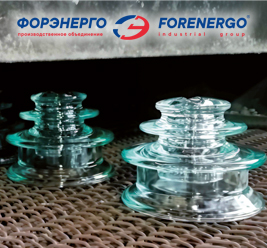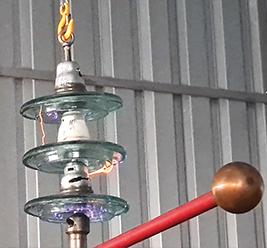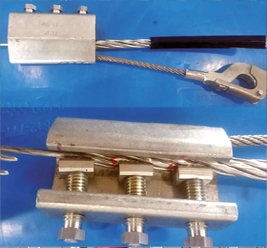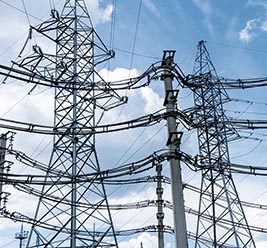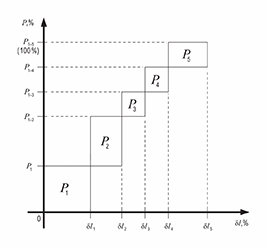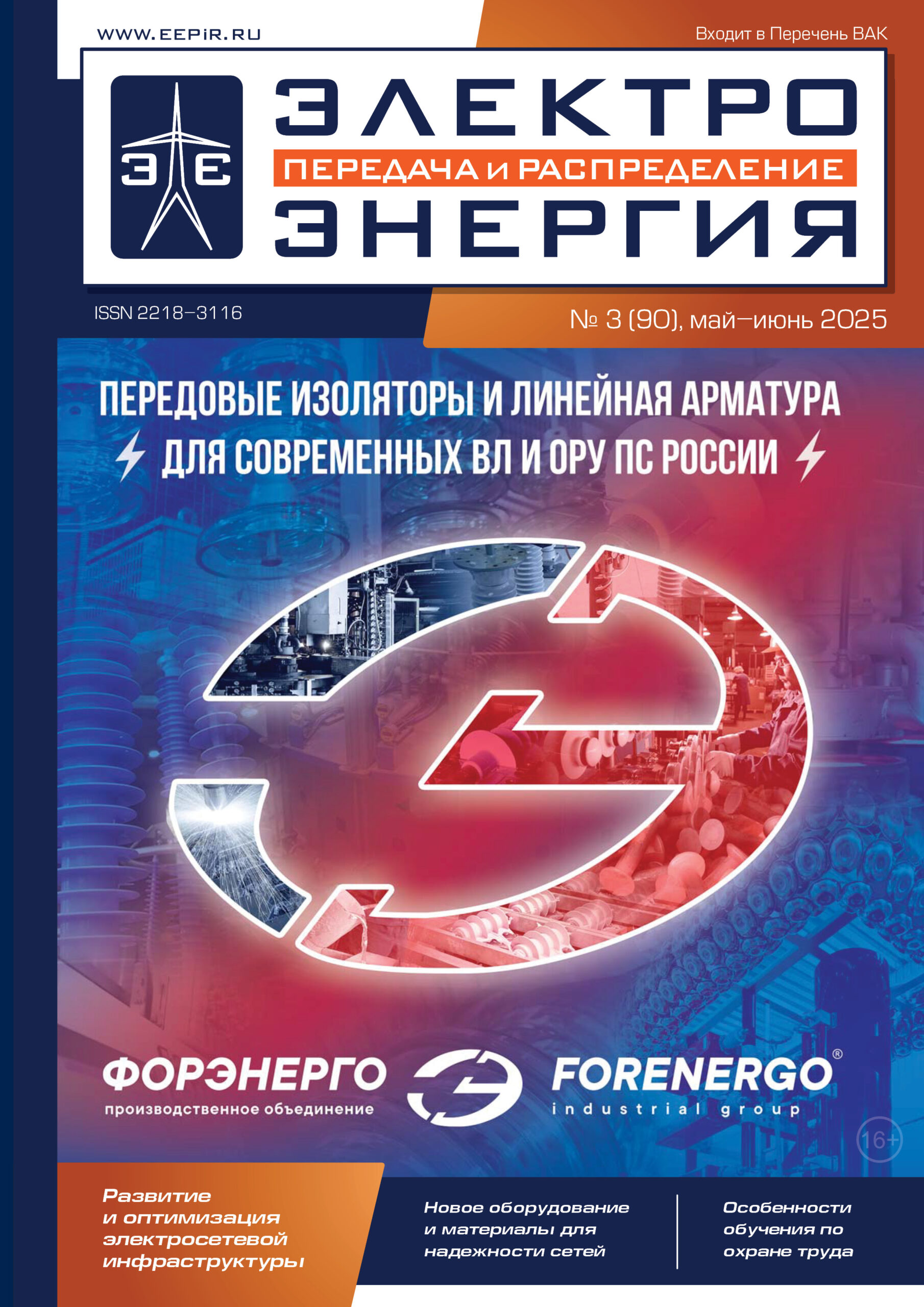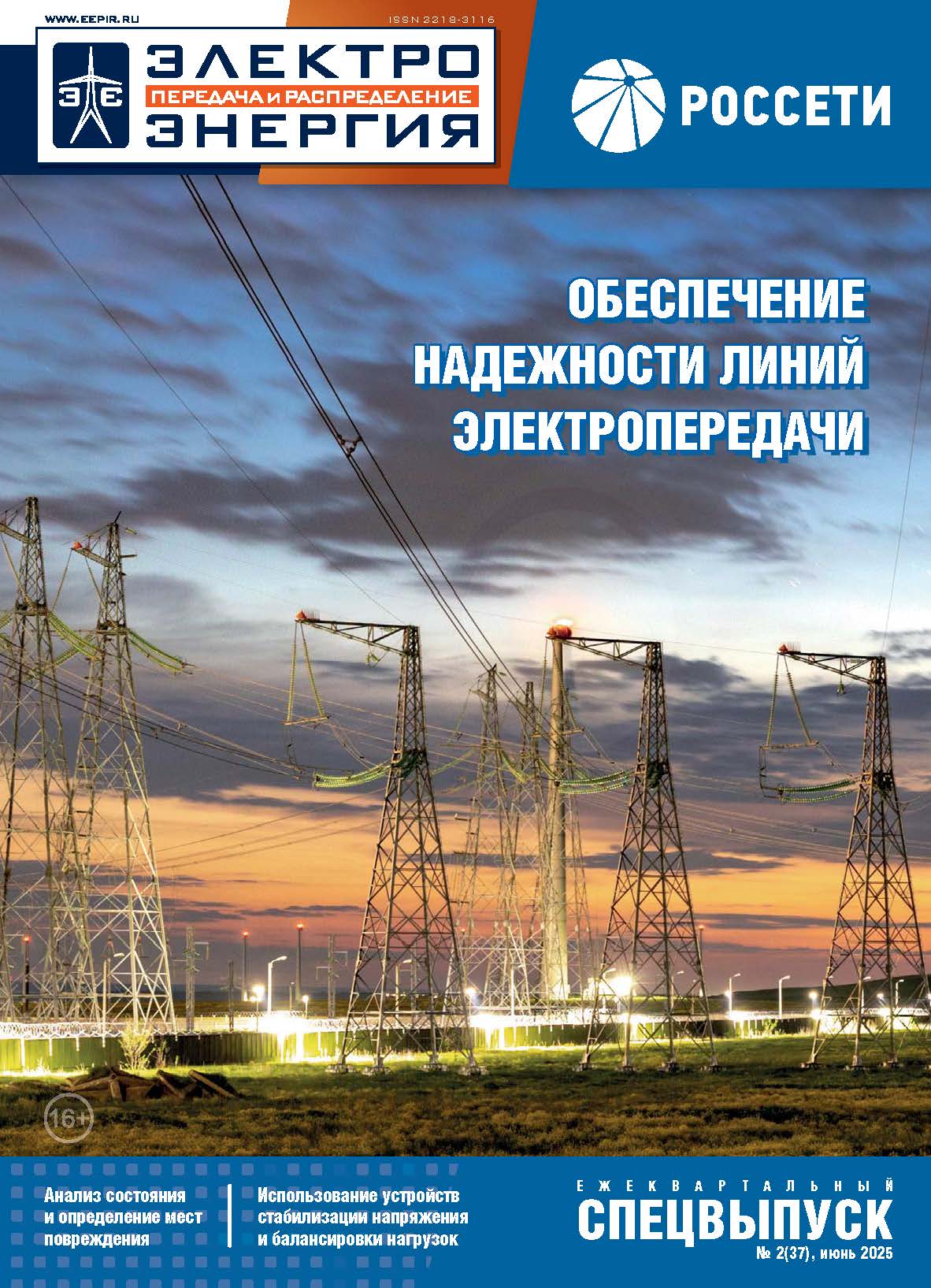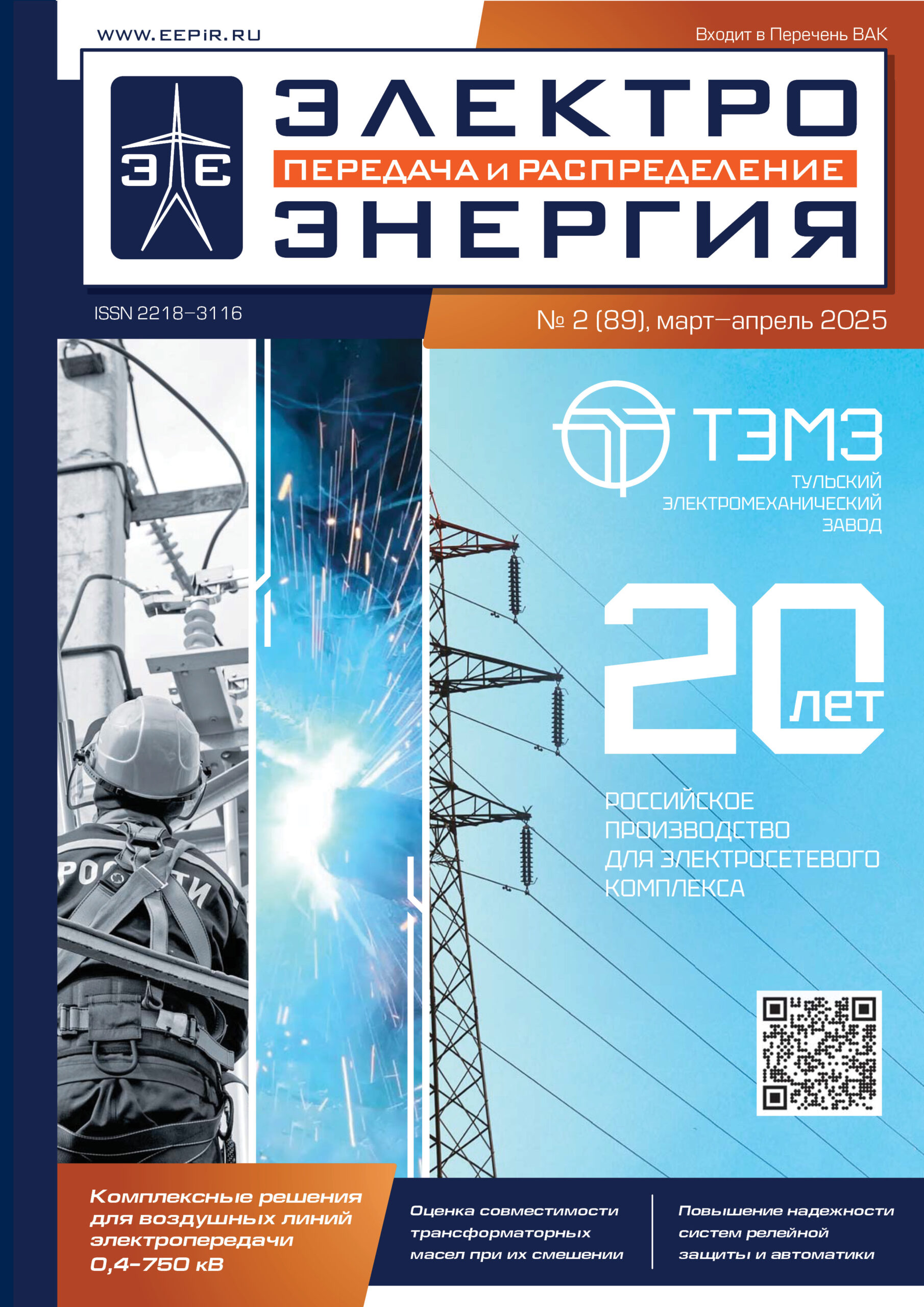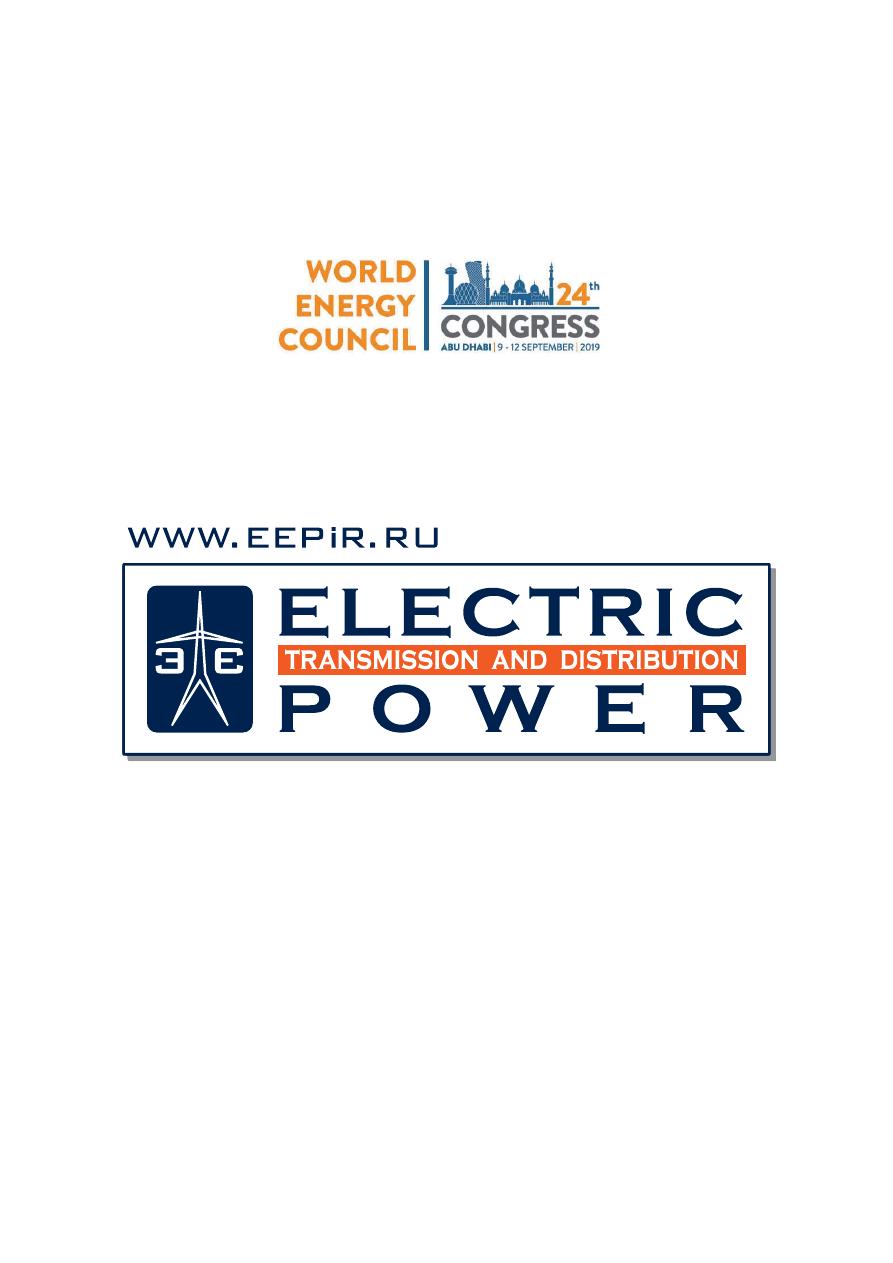
The MAIN JOURNAL for POWER GRID SPECIALISTS in RUSSIA
3 - 6 J U N E 2 0 1 9
MADRID, SPAIN
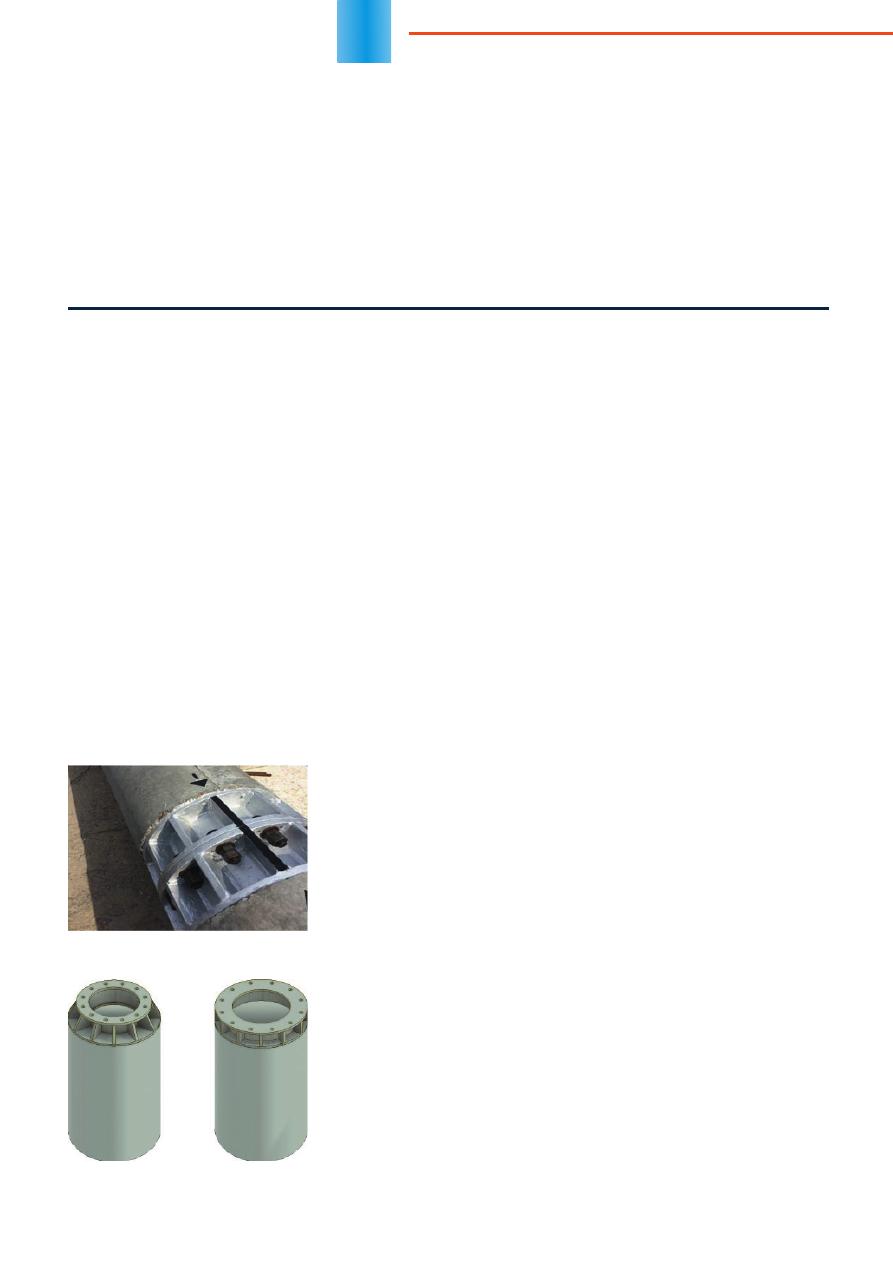
36
Sectionalized Reinforced Concrete Power
Transmission Poles for Reducing Overhead
Lines Cost, and Modern Projects of Power
Transmission Poles as a Basis for
Digital Network Space Formation
Liubov KACHANOVSKAYA,
PhD, Нead of Scientifi c Research
Laboratory of Electrical Grid
Construction
Peter ROMANOV,
Ph.D, Ch.Eng. Scientifi c Research
Laboratory of Electrical Grid
Construction
Sergey KASATKIN,
Eng. Scientifi c Research Laboratory
of Electrical Grid Construction
Tatyana SBOYCHAKOVA,
Eng. Scientifi c Research Laboratory
of Electrical Grid Construction
The paper is devoted to the erection of modern reinforced concrete poles to power transmis-
sion lines. The durability of those poles is comparable to the service life of metal poles while
the cost is half. Sectionalization of spun concrete poles simpli
fi
es their transportation. New
solutions for erecting power transmission poles on foundations raise the height of conductors'
suspension. Thus, new reinforced concrete poles are capable to replace metal structures ef-
fectively in more than 60% of cases. Modern typical projects for overhead transmission lines
can be incorporated into a single digital space of power line design, where necessary infor-
mation will be present for all interested units throughout the entire life cycle of the facility.
A
lmost half of the length of
all overhead lines in Rus-
sia was built using rein-
forced concrete power
transmission poles from spun con-
crete. Thus, the task of reducing
metal consumption and power lines
cost was solved in the middle of the
last century. Spun concrete allows
engineers to achieve a high degree
of material compaction. In its turn,
prestressing of concrete provides
increased rigidity of the poles. Ac-
cording to the data on power trans-
mission poles failure rate processed
by JSC "Firma ORGRES" for more
than 40-year period, metal and rein-
forced concrete structures demon-
strates an equal reliability.
In 2013, the fi rst samples of the
poles from two sections with an in-
ternal fl ange (the fl ange is placed in
the concrete form before centrifuga-
tion) were manufactured and tested
(Figure 1).
As before, modern poles are
made in conical or cylindrical con-
crete forms with a length of 26 and
20 m, respectively. Short sections
solve logistical problems and have
increased rigidity. Also, they are not
damaged during transportation and
are easily interconnected with bolts
on the erection site.
By now, recommendations on
the use of sectionalized reinforced
concrete power transmission poles
for 110-750 kV power lines have
been included in the PJSC "Rosseti"
Regulations "On a unifi ed technical
policy in power grids". It was done
through the joint eff orts of the Ros-
seti Group of Companies and cre-
ators of the design.
For the replacement of old
power transmission poles and the
creation of an emergency reserve,
PJSC "Rosseti" recommends us-
ing sectionalized analogues of SK
22 and SK 26 reinforced concrete
poles. Systematic work on the new
poles erection has been in progress
since 2015. Sectionalized poles are
manufactured at the factories of "PO
"Ener gozhelezobetoninvest", LLC in
Rybinsk, Volgograd and Gulkevichi
(Krasnodar Territory). All afore-men-
tioned manufactures are certifi ed at
PJSC "Rosseti".
New sectionalized power trans-
mission poles are selectively erected
to replace poles taken out of service.
New poles are formally designed for
the same loads. Except easy trans-
portation without damage, separate
rigid sections have a signifi cant
advantage: cable reinforcement is
used in all constructions. It increas-
es the crack resistance by means
of pretension. Moreover, the use of
concrete characterized by enhanced
strength class (B60 instead of B40
or B30), waterproofness (W14 in-
stead of W8) and frost resistance
(F
1
400 and above instead of F
1
200)
increases power transmission poles
service life up to 70 years. Thus,
there is no need for poles repair dur-
ing the operation.
For a wide use of reinforced
concrete poles in the new construc-
tion, a series of unifi ed designs for
OVERHEAD
TRA
N
SM
I
SS
I
O
N
L
IN
ES
Fig. 1. Internal
fl
ange for connecting
sections (typical solution)
Fig. 2. Nodes for connecting base
sections with intermediate and anchor
and angle reinforced concrete power
transmission poles
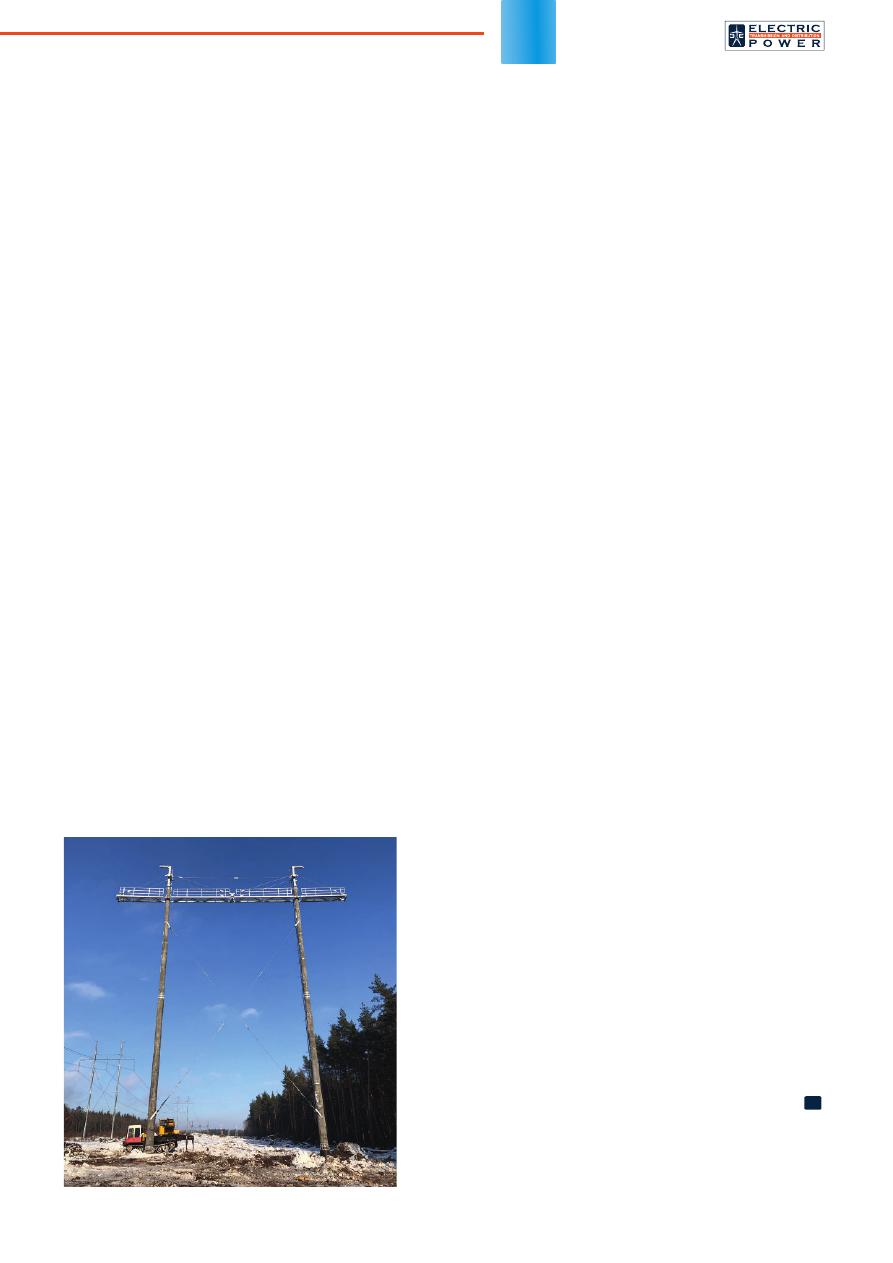
37
110 kV overhead lines was devel-
oped. A full-fl edged standard proj-
ect includes design documentation
for 23 types of power transmission
poles, including 8 intermediate poles
and 15 anchor poles in single-circuit
and double-circuit design.
Intermediate power transmission
poles are made on the basis of coni-
cal pillars 26 m long (from two sec-
tions with a length of 13 m each), the
lower diameter of which is 650 mm.
For more loaded anchor poles, cy-
lindrical pillars with a diameter of
800 mm, manufactured in concrete
forms with a length of 20 m (with
a length of 10 m each) are used.
A signifi cant achievement was
erecting poles on the foundation sec-
tions of cylindrical reinforced shell-
type concrete piles of 800 mm di-
ameter. The proposed design of the
fl ange joint between poles and foun-
dations (Figure 2) made it possible to
raise the height of conductors’ sus-
pension, to increase the spans and to
reduce the total number of poles per
kilometer of overhead lines. Thus,
reinforced concrete power transmis-
sion poles became comparable to
metal ones. The load-bearing ca-
pacity of the poles was enhanced
by choosing a reinforcement system
and using high strength concrete. It
allowed power transmission poles to
carry increased loads.
In order to use power transmis-
sion poles within new construction,
a series of regulatory documents
has been developed. The docu-
ments included process charts for
erection and operating instructions
for sectionalized structures.
All types of 110 kV poles were
tested at the facility of "Firma OR-
GRES", JSC in Khotkovo. All man-
ufacturing plants were certifi ed at
PJSC "Rosseti".
A technical and economic compar-
ison of the cost for 110 kV overhead
line section built using new reinforced
concrete poles with overhead line on
metal poles showed that the new
poles reduce the construction costs
by half, saving at least 900,000 ru-
bles per kilometer for single-circuit
power lines and 1300,000 rubles for
double-circuit power lines.
In addition to standard designs
for 110 kV overhead lines, more than
20 types of sectionalized reinforced
concrete poles were developed as
a part of real projects for 35, 110, 220,
330, 500 kV overhead lines. In Janu-
ary 2019, one of the anchor spans of
500 kV overhead transmission line
"Donskaya AES – Staryy Oskol 2"
was built using 2SPB500-3V portal
concrete structures (Figure 3).
A feature of these structures was
erection of poles on reinforced con-
crete foundations, which made it
possible to raise the height of con-
ductors’ suspension and to increase
the spans up to the level of 2MP500-
3V multi-faceted power transmission
poles, installing on other sections of
overhead line. At the same time, the
cost of poles and foundations de-
creased by 1.5 times compared with
metal poles.
Individual projects of new de-
signs, providing opti-
mal solutions in spe-
cifi c conditions, place
high demands on de-
velopers’ qualifi cation
and require tests and
regulatory documents.
Due to this, time and
funds for developing
overhead lines project
are often not enough.
The solution of
the problem in mod-
ern conditions can be
found through the in-
tegrated development
of basic series for 220,
330 and 500 kV power
transmission
poles,
planned for release as
a part of PJSC "FGC
UES" R&D.
Scientifi c Research Laboratory
of Electrical Grid Construction
Tel.: +7 (911) 285-94-61,
+7 (812) 309-39-61
www.nilkes.ru
Real optimization of design deci-
sions can be achieved through pro-
viding designers with the necessary
auxiliary programs for calculating the
bearing capacity of power transmis-
sion poles and foundations, taking
into account real conditions of over-
head lines route. The availability of
new generic projects to a wide range
of specialists will allow them to quick-
ly carry out all necessary calculations
for erecting poles in specifi c condi-
tions. Also, it will provide required
reliability of overhead lines projects,
while minimizing construction and
operation costs.
In addition, the availability of
a proven design options will allow
engineers to quickly modify power
transmission poles for other condi-
tions regarding to the conditions for
main series. Thus, it is possible to
obtain the optimal (almost individual)
design for specifi c overhead lines.
3D-models of the poles will al-
low engineers to avoid mistakes in
the development of structures, to re-
duce the time for overhead line proj-
ects development, to guarantee the
absence of problems in the factory
production and fi eld assembly and to
make informed decisions relating to
repair volume in operation.
To guarantee delivery of quali-
ty structures to the line route, power
transmission poles will be equipped
with electronic markers using radio
frequency identifi cation technology.
The radio-frequency identifi er con-
tains the initial information about the
pole, which can be expanded with
the data stored on the factory server.
In such a way, it is possible to clarify
the parameters of power transmission
poles manufacture. Information on all
products supplied to PJSC "Rosseti"
facilities will allow the customer to
control overhead line during construc-
tion phase and entire service life. As
a result, data on power transmission
poles installed on line route will be
linked with the geographical coordi-
nates of the area (GIS model) and will
be used in the common CIM model
of electrical grid (Common Informa-
tion Model) for solving production and
technical management problems.
Р
Fig. 3. 2SPB500-3V power transmission poles on 500 kV
"Donskaya AES – Staryy Oskol 2" overhead line
24th World Energy Congress
Special issue, September 2019
The paper is devoted to the erection of modern reinforced concrete poles to power transmission lines. The durability of those poles is comparable to the service life of metal poles while the cost is half. Sectionalization of spun concrete poles simplifies their transportation. New solutions for erecting power transmission poles on foundations raise the height of conductors’ suspension. Thus, new reinforced concrete poles are capable to replace metal structures effectively in more than 60% of cases. Modern typical projects for overhead transmission lines can be incorporated into a single digital space of power line design, where necessary information will be present for all interested units throughout the entire life cycle of the facility




